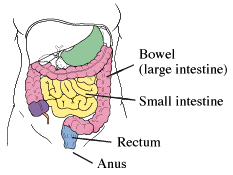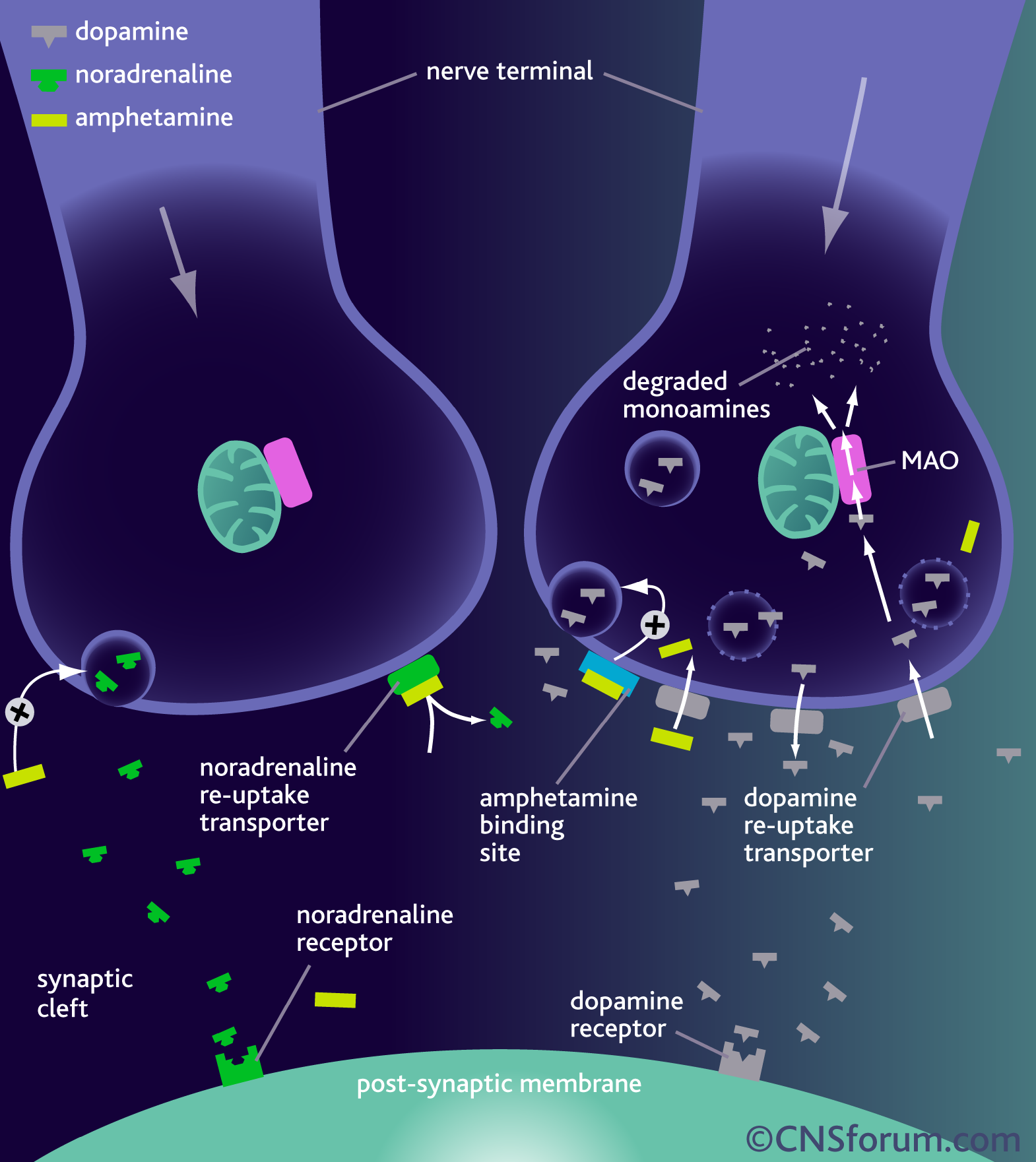
Amphetamines are moderately weak bases due to the presence of an amine group. Amphetamines are readily absorbed in the gastrointestinal tract, particularly in the small intestine. Because of their basic properties, amphetamines are generally unionised in the alkali conditions, and so the molecules can freely penetrate into the epithelia cells of the small intestine. Amphetamines freely penetrate the blood brain barrier. They can also be absorbed from the nasal cavity. Its plasma half life is approximately 12 hours, but this is highly dependant on urine pH. Amphetamine are excreted in urine, and is unaltered during metabolism.
Picture taken from http://depts.washington.edu/rehab/sci/pamp_bowels01.html without permission
Amphetamines are part of a class of drugs called indirectly acting
sympathomimetics.
These kinds of drugs cause a release of catecholamines from nerve terminals.
Noradrenalin (NA), a neurotransmitter in the sympathetic nervous system, and
dopamine (DA), a neurotransmitter associated with reward and learning, are the
main catecholamine released that produce the physiological and psychological
effects of amphetamine. Serotonin (5-hydroxytryptamine, 5-HT) is also released,
but to a much lesser extent.
The release of these neurotransmitters causes several affects around the body. The effects that are closely associated with NA release are high blood pressure, inhibited gastromortility, brochioldilation, peripheral vasoconstriction, and increased heart rate and force of contraction. The behavioural effects of amphetamine are closely related to dopamine release. These effects include euphoria and excitement, and locomotor stimulation. Studies in rats have shown that the destruction of the noradrenergic neurones in the CNS does not affect locomotor stimulation produce by amphetamines, where as the destruction of dopamine containing nucleus accumbens inhibit this response.
Normally, DA and NA release is regulated by vesicular release into the synaptic cleft, and uptake 1 (removal of NA from the synaptic cleft) and dopamine transporters (DAT, removal of DA from synaptic cleft). Then they are metabolised by monoamine oxidases (MAO).
Amphetamines are transported into the neurones by either uptake 1 or DAT. This enables amphetamines to become concentrated in the neurone, and thus displace NA/DA from there vesicles. This increases the cytosolic concentration of the neurotransmitters in the neurone. MAO would metabolise the cytosolic neurotransmitters but amphetamine inhibits this enzyme, so the concentration of NA and DA in the cytoplasm is not effectively reduced by MAO. Uptake 1 and DAT will then release NA and DA into the synaptic cleft, in exchange for amphetamine. And so the cycle goes on, amphetamines are brought into the neurone, displacing NA and DA, with are then release into the synaptic cleft in exchange for more amphetamine.
Amphetamines inhibit uptake 1 and DAT, which would normally remove NA and DA, so the concentration of NA and DA increases as long as amphetamine is still present.
The net result of this action by amphetamine is an increased concentration of neurotransmitters in the synaptic cleft, resulting in over stimulation of the post synaptic neurone. Depending on where the post synaptic neurone effects, a deviation from the norm occurs. This leads to the behavioural and physiological effects associated with amphetamine.


Click on words in the above images for a Wikipedia definition.
Pictures taken from www.CNSforum.com without permission
Above, left shows the CNS effects associated with the amphetamine "high". Above right shows the "low", where there less neurotransmitter in the synaptic cleft.